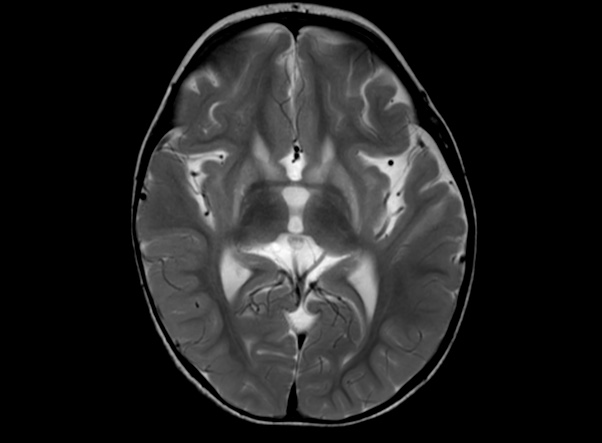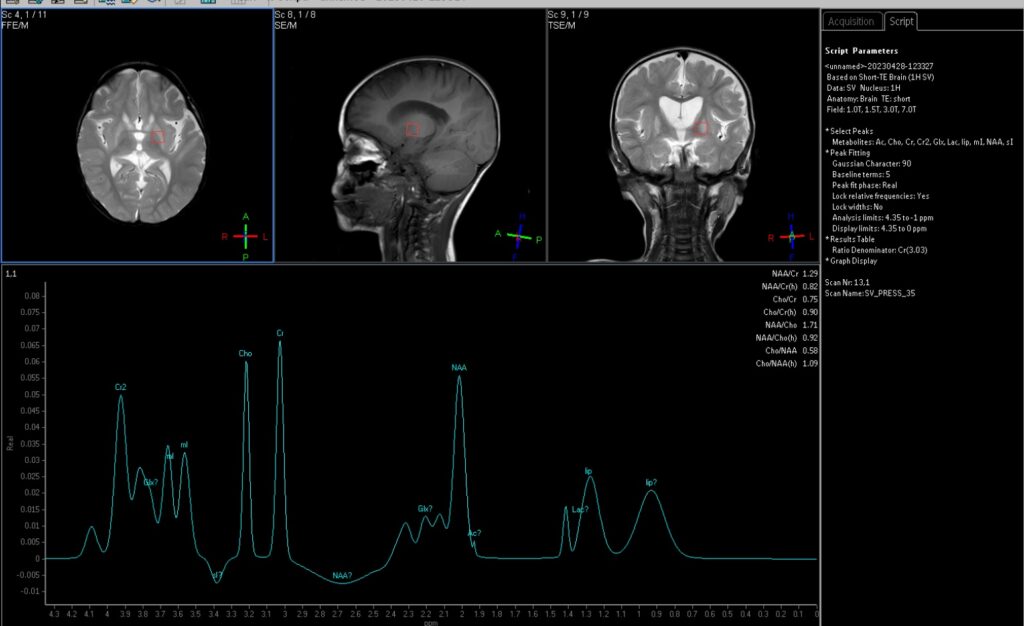

Leigh syndrome is a progressive neurodegenerative disorder of childhood with an estimated incidence of 1:40,000 births.
Leigh syndrome is the most common clinical phenotype of mitochondrial disorders in childhood. The diagnostic criteria are (1) progressive neurological disease with motor and intellectual developmental delay; (2) signs and symptoms of brainstem and/or basal ganglia disease; (3) raised lactate levels in blood and/or cerebrospinal fluid (CSF); and (4) characteristic symmetric necrotic lesions in the basal ganglia and/or brainstem .
The most characteristic neuroradiological findings in Leigh syndrome are bilateral, symmetric focal hyperintensities in the basal ganglia, thalamus, substantia nigra, and brainstem nuclei at various levels on T2-weighted MRI. These high T2 signals on MRI reflect the spongiform changes and vacuolation in the affected brain structures . Often, the basal ganglia are affected before the brainstem. The upper brainstem followed by lower brainstem would be affected with the progression of the disease. Involvement of lower brainstem indicates advanced stage of the disease and the occurrence of respiratory failure and sudden death. In most patients the cerebral white matter is generally only involved in late stages of the disease. Occasionally, patients may have atypical neuroimaging features such as diffuse supratentorial leukodystrophy, unifocal or multifocal infarctions, diffuse or focal cortical atrophy, or predominant cerebellar atrophy
References: